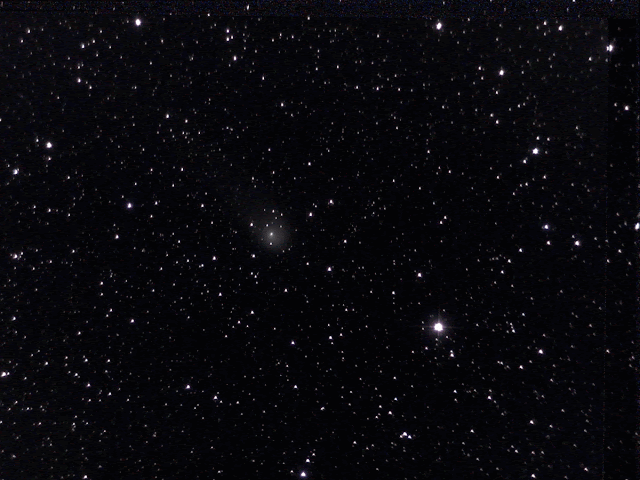Nebulae, star clusters and galaxies are always popular targets in astronomy, but I sometimes like to go long and take a deeper look into the universe. The most distant objects that are consistently visible are quasars. For those who don't know, quasars are infant galaxies that have supermassive black holes in their cores. Black holes, as you might expect, are black, but when they have things like stars and gas clouds falling into them everything around the black hole gets super hot and shines with intense brightness allowing them to be seen from billions of light years away.
When quasars were first found they were quite mysterious. They looked very much like stars in our own galaxy that were emitting radio waves. Nobody understood what they really were for quite sometime, but the first piece of the mystery to be solved was that they are immensely far away and therefore shining with a brightness that at the time could not be explained. The first quasar to have its distance identified was 3C 273 [Note: Quasars have terrible names!].
 |
| Quasar 3C 273 |
Determining the distance to a quasar is a matter of taking its spectrum to determine its redshift. From there getting the distance of the quasar is pretty straight forward if you understand exactly how the universe itself is expanding. There is still some disagreement as to the exact rate at which the universe is expanding, so the distances that I'll use here are not precise. 3C 273 lies some 2 billion light years from our home galaxy the Milky Way which, because that's how long its light took to get here, means that we see this core of a baby galaxy the way it looked 2 billion years ago.
It's important to put that figure into perspective. The light captured here with my 4.5-inch eVScope left that quasar 2 billion years ago. That was right around the same time that primitive, single-celled life was starting to seriously add oxygen into Earth's atmosphere [this was actually quite terrible for most things that were alive at the time, but that's another story].
The quasar known as PG 1427+480 [See, I told you they had terrible names, though most of them are a nod to their coordinates in the sky.] is marked in the image below:
Hopefully you haven't gotten tired of seeing dots yet. This next one is HS 0624+6907:
The last one in this post is faint, so I've cropped the image from the full frame:
That little dot is a quasar known as S5 0014+81. The image shows light that left the quasar 11.96 billion years ago. Think about that. The light recorded here left the quasar long before Earth itself was formed. Seeing this can really give you a sense of perspective.To find these quasars I rely heavily on the SkySafari Pro app, especially to identify the star fields. There's also a couple of sites on the Web that are helpful. The Frankfurt Quasar Monitoring site is a great resource and there's a text list of over 450 quasars here. There are various Cosmology Calculators online where you can input an object's redshift (z) and get a distance. You can find one here and here.







%20April%2028.gif)
















